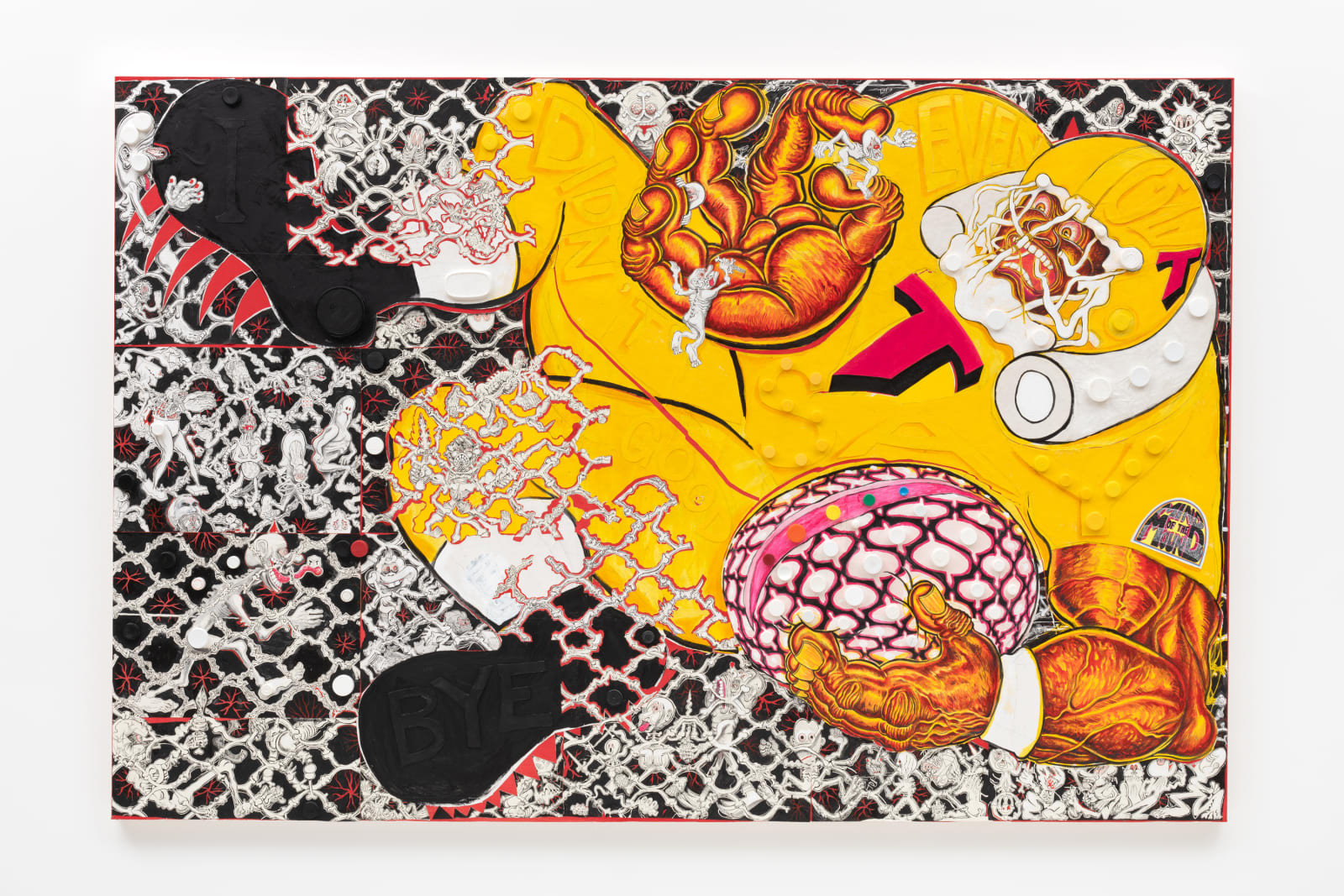
Trenton Doyle Hancock
I Didn't Even Get to Say Goodbye, 2021
Acrylic, paper, and plastic on canvas
182.9 x 275 x 7.1 cm
72 1/8 x 108 1/4 x 2 3/4 in
72 1/8 x 108 1/4 x 2 3/4 in
In the monumental I Didn’t Even Get to Say Goodbye (2021) Hancock’s protagonist Torpedo Boy is portrayed as an American Footballer. A sport long associated with national identity and the...
In the monumental I Didn’t Even Get to Say Goodbye (2021) Hancock’s protagonist Torpedo Boy is portrayed as an American Footballer. A sport long associated with national identity and the American dream; Hancock unpacks American Football as a cultural signifier. In the work, Torpedo Boy fights with Vegan characters that are clambering over his body. In this war, Torpedo Boy has used the bones of the vegans to create his Football helmet. Hancock has long thought about how sport in the US promises to elevate children of colour out of their circumstances, designed to keep Black people in a system where everyone makes money, likening it to the systems of industrial prison complexes and the military and seeing all these organisations as interconnected. These themes are layered with the intensely personal — the work and title references the passing of Hancock’s grandmother. The decorative pattern that almost consumes Torpedo Boy was the pattern of the living room floor tiles in his grandmother’s house in Paris, Texas and is a motif often repeated throughout Hancock’s works. This work brings together signifiers of both her presence (the quatrefoil pattern) and her passing (the bones which make up Torpedo Boy’s protective helmet).
The work is testament to Hancock’s practice, in which he layers concepts and materials with great complexity. Formal elements of medium, colour, shape and line are of upmost importance to the artist, who creates work with dynamism and impact, in order to communicate narrative elements.
The work is testament to Hancock’s practice, in which he layers concepts and materials with great complexity. Formal elements of medium, colour, shape and line are of upmost importance to the artist, who creates work with dynamism and impact, in order to communicate narrative elements.